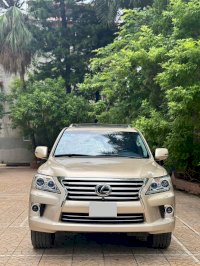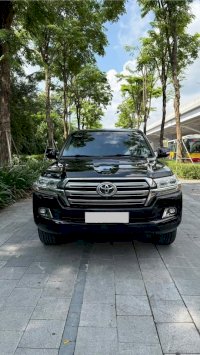Automotive Brake Parts: A Comprehensive Guide To Components, Function, And Maintenance
Liên hệ
Brakes are one of the most crucial safety components in any vehicle. A well-maintained braking system ensures smooth and reliable stopping power, reducing the risk of accidents. Understanding automotive brake parts and their functions can help vehicle owners make informed decisions about maintenance and replacements.
In this article, we will cover the main brake system components, types of brakes, common issues, signs of failure, and maintenance tips to keep your vehicle's braking system in top condition.
Main Components of an Automotive Brake System
The brake system consists of multiple components working together to slow down or stop a vehicle. Below are the essential parts:
1. Brake Pads
- The most commonly replaced brake component.
- Presses against the brake rotor to create friction and stop the wheel.
- Made from materials such as ceramic, semi-metallic, and organic compounds.
2. Brake Rotors (Brake Discs)
- Circular metal discs attached to the wheel hub.
- Brake pads clamp onto the rotor to create friction and slow down the vehicle.
- Available in solid, vented, slotted, or drilled designs for better heat dissipation.
3. Brake Calipers
- Houses the brake pads and applies pressure to them.
- Uses hydraulic force from brake fluid to squeeze the pads against the rotors.
- Comes in floating (sliding) or fixed designs.
4. Brake Drums
- Found in drum brake systems (mainly on older or rear-wheel drive vehicles).
- Houses brake shoes that expand outward to slow the wheel.
5. Brake Shoes
- Used in drum brake systems instead of brake pads.
- Press against the drum to create friction and stop the vehicle.
6. Brake Master Cylinder
- Converts the force from the brake pedal into hydraulic pressure.
- Sends brake fluid to the calipers or wheel cylinders.
7. Brake Fluid
- Transfers hydraulic force through the braking system.
- Essential for proper brake function.
- Needs to be changed periodically to avoid contamination.
8. Brake Lines and Hoses
- Carries brake fluid from the master cylinder to the calipers.
- Flexible hoses allow for suspension movement.
9. Brake Booster
- Assists in applying brake force with minimal effort.
- Works using vacuum (vacuum booster) or hydraulics (hydro-boost system).
10. ABS (Anti-lock Braking System) Components
- Prevents wheel lockup during hard braking.
- Includes wheel speed sensors, ABS pump, and ABS control module.
Types of Automotive Brakes
There are different types of braking systems depending on the vehicle design and intended use.
1. Disc Brakes
- Used in most modern vehicles.
- Provides superior stopping power and heat dissipation.
- Consists of brake rotors, calipers, and pads.
2. Drum Brakes
- Found in older vehicles and some rear-wheel applications.
- Uses brake shoes inside a drum to create friction.
- Less expensive but not as effective as disc brakes.
3. Emergency Brake (Parking Brake)
- A mechanical or electronic system that keeps a car stationary.
- Works independently of the main braking system.
- Can be operated manually (lever or foot pedal) or electronically.
4. Anti-lock Braking System (ABS)
- Prevents wheels from locking up during sudden braking.
- Improves vehicle control on slippery roads.
- Uses sensors to detect wheel speed and adjust braking pressure.
5. Regenerative Braking (Hybrid and Electric Vehicles)
- Converts kinetic energy into electricity to recharge the battery.
- Found in hybrid and electric vehicles.
Common Brake System Problems
Brakes wear down over time due to friction and heat. Here are some of the most common brake issues:
1. Squeaking or Grinding Noises
- Caused by worn brake pads or debris stuck in the caliper.
- If grinding, the brake pads may be completely worn, damaging the rotors.
2. Vibrations or Pulsating Brake Pedal
- Warped brake rotors due to overheating.
- Uneven rotor surface causes inconsistent braking.
3. Soft or Spongy Brake Pedal
- Air in the brake lines or low brake fluid levels.
- Brake system may need to be bled or refilled.
4. Brake Warning Light On
- Indicates low brake fluid, worn brake pads, or ABS malfunction.
- Requires immediate attention.
5. Car Pulling to One Side While Braking
- Uneven brake pad wear or sticking calipers.
- May also be due to uneven tire pressure.
6. Burning Smell After Braking
- Overheated brakes due to aggressive driving or dragging calipers.
- Can lead to brake fade, reducing stopping power.
Signs You Need to Replace Brake Parts
If you notice any of the following, your brake parts may need replacement:
✅ Brake pads are thinner than 3mm
✅ Brake fluid is dirty or low
✅ Rotors have deep grooves or scoring
✅ Brake pedal feels soft or unresponsive
✅ Braking distance has increased significantly
Brake Maintenance Tips
Proper brake system maintenance is essential for vehicle safety. Here’s how you can extend the life of your brake components:
1. Check Brake Pads and Rotors Regularly
- Inspect brake pad thickness and replace them before they wear down completely.
- Look for cracks or warping on the rotors.
2. Change Brake Fluid Every 2-3 Years
- Brake fluid absorbs moisture over time, reducing braking efficiency.
- Use manufacturer-recommended brake fluid.
3. Avoid Hard Braking
- Aggressive braking generates excessive heat, wearing out brake pads and rotors faster.
4. Replace Worn Brake Components Promptly
- Driving with worn pads, rotors, or calipers can lead to expensive repairs.
5. Get a Professional Brake Inspection Annually
- A mechanic can check brake lines, hoses, and fluid condition.
- Helps detect problems before they become serious.
Brake Part Replacement Costs
The cost of replacing brake parts depends on the vehicle type and labor fees.
| Brake Component | DIY Cost | Professional Repair Cost |
|---|---|---|
| Brake Pads | $30 - $150 | $150 - $400 |
| Brake Rotors | $40 - $200 (each) | $300 - $800 (for both) |
| Brake Calipers | $50 - $300 (each) | $300 - $1,000 (for both) |
| Brake Fluid Flush | $10 - $50 | $80 - $200 |
| ABS Sensor | $50 - $150 | $200 - $600 |
Final Thoughts: Keep Your Brakes in Top Condition
The braking system is one of the most important safety components in your vehicle. Regular inspection, maintenance, and timely replacement of brake parts can prevent accidents and costly repairs.
If you notice strange noises, vibrations, or braking inefficiency, don’t ignore the warning signs! Get your brakes checked and repaired immediately for safe driving.
Would you prefer DIY brake maintenance, or do you trust a mechanic for repairs? Let us know your thoughts! ️
HẾT HẠN
| Mã số : | 17780230 |
| Địa điểm : | Toàn quốc |
| Hình thức : | Cần bán |
| Tình trạng : | Hàng mới |
| Hết hạn : | 22/03/2025 |
| Loại tin : | Thường |
Gợi ý cho bạn












Bình luận